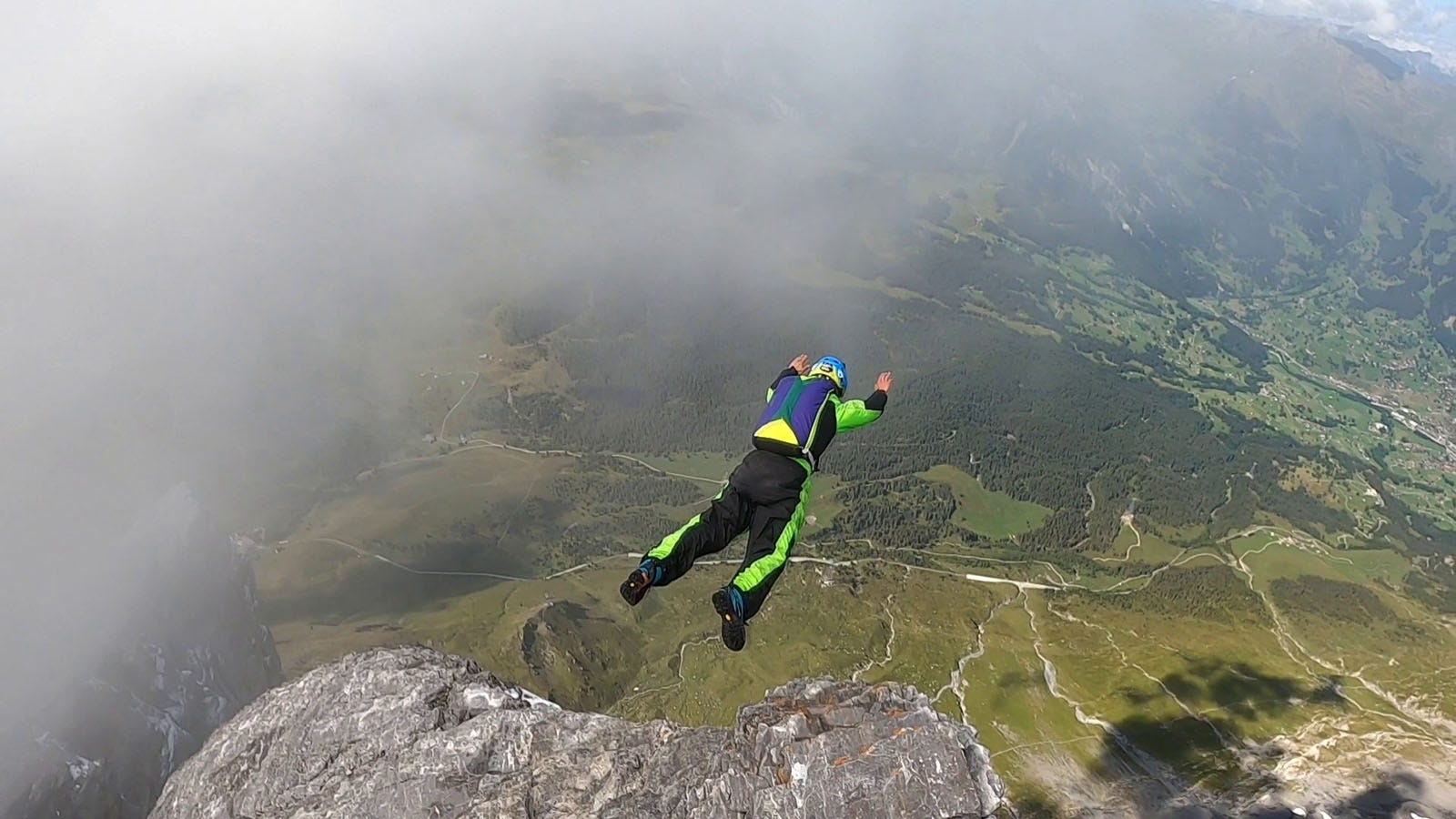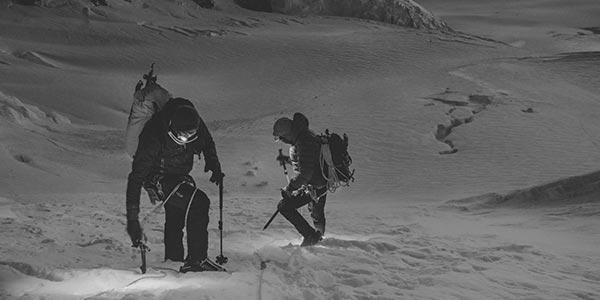

Combining several disciplines in the same activity is always a challenge, but I think the beauty of the mountain is that it can be enjoyed in a thousand and one ways.
It all started with being keen to try different activities, and not being able to focus on just one sport. This has led me to practice several extreme sports such as rock climbing, rope jumping, paragliding, mountaineering and, now, finally BASE jumping. Once I tried one sport, the others emerged naturally. It often went hand in hand with the people I met. Some taught me to climb, others to fly and it has all resulted in a multi-sport passion!




At first, I limited myself to practice each sport separately, with no intention other than enjoying it. One thing I knew from the beginning was that I wanted to practice them safely. Setting a base of knowledge and experience with which I felt comfortable to keep practicing the activities over time. Therefore, training was important. It is difficult to improve in each sport when you diversify so much so the evolution is slower, but if you decide to practice these sports you have to be constant to be safe.
Training BASE jumping may seem a paradox itself. The more you jump, the more you expose yourself to an accident, but it’s not that way indeed. This sport has changed a lot lately. In fact, the more you jump the safer it gets. You gain ability by improving your technique and enhancing your reflexes, so you automate moves and start being able to pay attention to external stimuli. In the end, you become a safer jumper by trying different exits and exposing yourself to different challenges. It is important to be constant too, as you lose that confidence very quickly.
After reaching a high enough level in each discipline, the possibility for combined activities opened up. For me, the philosophy of Climb & BASE is to do the complete activity in a rope team. That means that both members climb with their jumping gear and jump with the climbing gear, without external assistance and without leaving any gear behind. Thanks to this idea, I feel we are living a second golden age in alpinism. Introducing BASE jumping to the equation, many new projects are on the table. It's really motivating to be entering this sport at this time, it has come so far but it has a long way to go.






My partner and I started to dream of alpine projects and little by little we began to carry them out. Europe is the perfect scenario for paralpinism. The Pyrenees and Alps offer a great amount of opened alpine exits because there are some strong alpinist BASE jumpers, but there are also a great many new and very interesting projects to be done.
We created a list of activities that motivated both of us and started planning the logistics to achieve our goals. Every project has its difficulty, and you can gradually increase the difficulty so the paralpinism is not less. Just as the climbing routes have their well-known grades, within the world of BASE there are also factors that make a jump more or less complicated. From the verticality of the wall or the rock drop height to the remoteness of the area where you are, there are more committed jumps than others. Similarly, the commitment is higher if nobody has ever jumped from that exit before. The opening of new exits is another factor that motivates me because you must prepare everything: calculate the height of rock drop, the possible lines to fly, the landing distance and some other factors. Analysing everything and executing the jump trusting your calculations.
Another important thing to plan is the material and here begins our obsession with weight. We climb heavily loaded and jump with everything we climb which greatly complicates things. Reducing a few seemingly insignificant grams on each device makes the whole equipment much lighter. This makes projects possible that would otherwise be unthinkable. In addition, it is a novel concept, so it is time to investigate what is the best way to do things: which are the lightest materials, what to leave without decreasing safety, where to put each device to jump... We need many training jumps and previous climbs trying different techniques before the day of the performance, to make sure that everything is planned in advance.






And once the day arrives...
BASE jump activities need perfect wind and clear-cloud conditions. You need to check the weather forecast in advance and choose the best date to do the project. For that same reason, most of the times you need to reach the summit or the exit before dawn, so the wind is calm. Getting up very early is inherent to this sport. Moving fast and efficiently on the way up is also necessary. You can’t waste time. Climbing is more difficult when you are heavily loaded, but the magic of the moment deserves all the suffering. Suffering itself also gives taste to the whole experience.
Once we reach the top, we need to find the exit. It’s usually easy because of the info we gathered before: some screenshots from a video, some info of previous jumpers... But for new openings you need more time and maybe a previous trip. Finally, it is time to gear up on a tiny ledge, put on our BASE jumping gear and attach all our climbing gear onto our bodies. The connection with the wall, with the whole mountain and with your partner is amazing. Tiredness, good humour, and a lot of adrenaline; they all mix. The commitment with the activity is something I find in few other situations.
Suddenly everything stops, all that matters is the here and now. I like to take a minute on the edge to savour the moment, I know I want to be there. I go through each part of the process in my mind, touching the pilot chute and the chest strap one last time. I visualize how I have to push in the jump, and I look for firmer ground for my feet. I imagine the free fall, the position of my body and the line I want to follow. I rehearse the opening moment and prepare for a possible incident. Previewing is the key to solve problems quickly and in BASE jumping speed is vital. I do it only once but thoroughly. Start to end. Without looping; and that's when the time comes. I let all the air out of my lungs and start the countdown, that mantra that prepares the mind for what is about to come: GO FOR IT!


At that moment the real action begins. I push as far as I can to gain distance from the wall, always trying to be stable. The first meters of free fall are very important because there is no relative wind and I cannot correct a balance error. I hold the position for a few seconds while my head lowers more and more until I find the right angle of flight and then… poof! The suit inflates and I start flying. All that falling energy begins to turn into horizontal speed. Those seconds are like the piece of the cake that you save for last, the last delicious bite you have worked for. I want it to last forever, the feeling of flying with your body is very powerful. I try to go fast, speed means safety when flying; I try to maintain the correct angle, this makes me hover and advance more; and when the moment comes, I change my body angle to brake and pull the pilot chute hoping that the opening is smooth and straight ...
Then the shouts of joy arrive, already under the canopy looking for a safe landing.




Words by | Marta Jimenez




